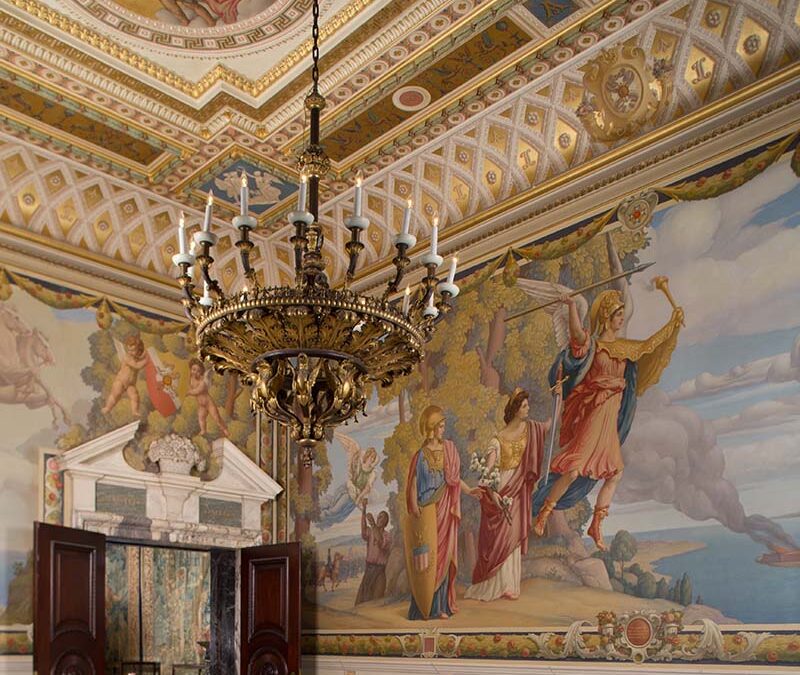Murals

| Maker | H. Siddons Mowbray |
| Date of Creation | 1908–09 |
| Location | Washington, D.C. |
| Materials | Oil on canvas, plaster, and gold leaf |
| Institution | The Society of the Cincinnati |
| Credit Line | Gift of Isabel Anderson, 1938 |
| Accession Number | M.1938.068-072 |
| Photo Credit | Mark Finkenstaedt |
H. Siddons Mowbray’s murals on the walls and ceiling of the Key Room of Anderson House are the heart of the mansion, a private residence completed in 1905 in Washington, D.C.’s fashionable Dupont Circle neighborhood. Built for Larz and Isabel Anderson, a wealthy American couple, Anderson House was their winter home, providing a base for their diplomatic, philanthropic, and cultural activities in the nation’s capital until 1937, when Larz died and his widow donated the house to the Society of the Cincinnati to become its headquarters and museum. Completed in December 1909, these murals chronicle on the four walls iconic events in American history: the achievement of American independence, the settlement of the frontier, the Civil War, and the beginning of the modern American nation forged during the Spanish-American War. The citizen-soldiers who helped win American independence are honored on the gilded ceiling through a series of medallions and smaller panels that depict the “Call to Arms,” the French Alliance, the “Genius” of the Society of the Cincinnati, and the “Triumphant Republic.” Together, the murals in the room commemorate the men and women who sacrificed to establish and preserve American freedom—albeit in an idealized way that reflects the Andersons’ privileged worldview. Larz and Isabel Anderson used the Key Room, a second-floor reception room, to formally greet their guests while surrounded by images of their patriotic heritage. Larz had the artist insert into each mural one of his ancestors who participated in the event, honoring his family’s tradition of public service. Two years after Mowbray completed the Key Room murals, Harper’s Monthly declared, “Seldom has one small room had compressed into it so fine and complete a presentation of History by Art.” Anderson House is the only building in Washington, D.C., that was decorated by Mowbray, one of the most popular artists of the Gilded Age.

